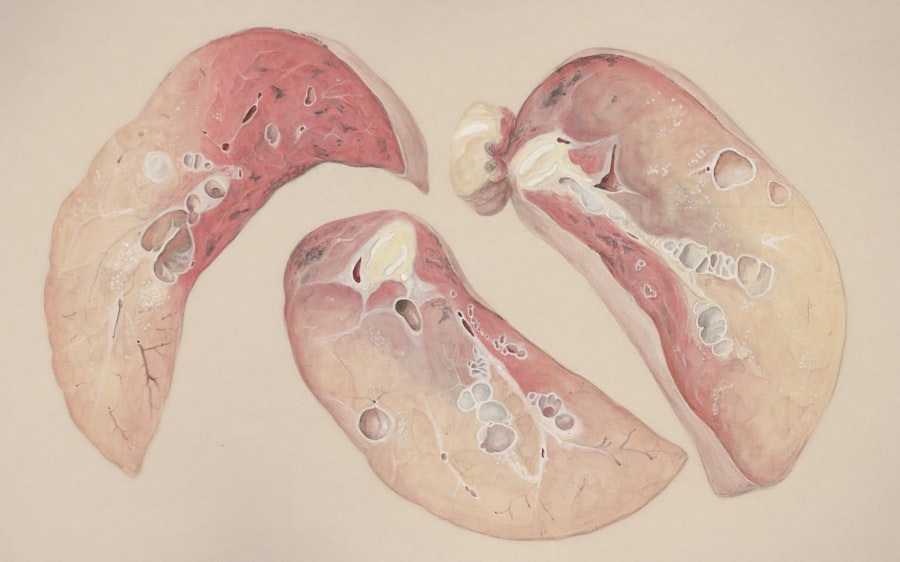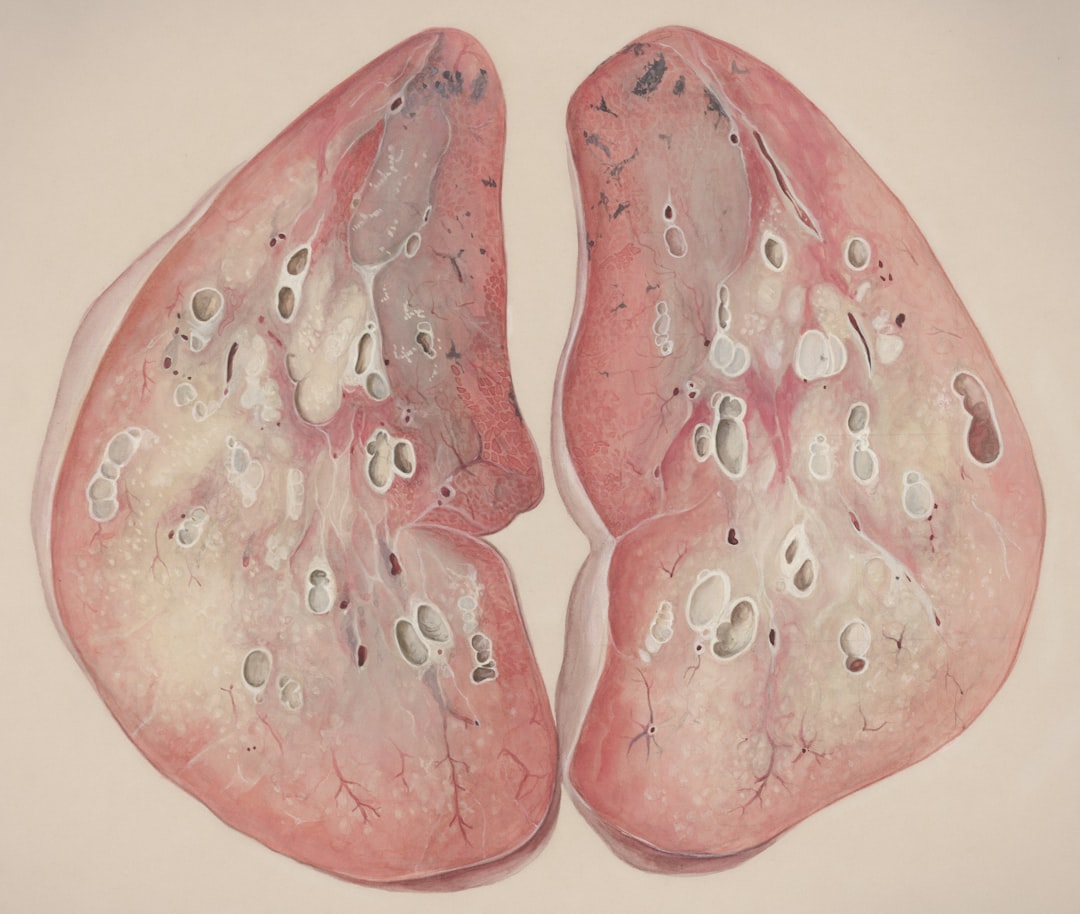Fatty liver disease, also known as hepatic steatosis, is a condition characterized by the accumulation of excess fat in liver cells. This condition can occur in individuals who consume little to no alcohol, leading to the classification of non-alcoholic fatty liver disease (NAFLD). In some cases, fatty liver disease can progress to more severe liver conditions, including inflammation, fibrosis, and cirrhosis.
Understanding this disease is crucial, as it can significantly impact your overall health and well-being. The liver plays a vital role in various bodily functions, including detoxification, metabolism, and the production of essential proteins. When fat builds up in the liver, it can disrupt these functions and lead to serious health complications.
Fatty liver disease is often asymptomatic in its early stages, making it challenging to detect without proper medical evaluation. As you delve deeper into this condition, you will discover its causes, risk factors, symptoms, and potential treatment options.
Key Takeaways
- Fatty Liver Disease is a condition where fat accumulates in the liver, leading to inflammation and potential liver damage.
- Causes of Fatty Liver Disease include excessive alcohol consumption and non-alcoholic factors such as obesity, high cholesterol, and type 2 diabetes.
- Risk factors for Fatty Liver Disease include obesity, insulin resistance, high levels of triglycerides, and metabolic syndrome.
- Symptoms of Fatty Liver Disease may include fatigue, weakness, weight loss, and abdominal pain.
- Diagnosing Fatty Liver Disease involves blood tests, imaging studies, and sometimes a liver biopsy to confirm the diagnosis.
Causes of Fatty Liver Disease
The causes of fatty liver disease are multifaceted and can vary from person to person. One of the primary contributors is an imbalance between the amount of fat being produced in the liver and the amount being removed. This imbalance can stem from various factors, including obesity, insulin resistance, and metabolic syndrome.
When your body becomes resistant to insulin, it can lead to increased fat storage in the liver, ultimately resulting in fatty liver disease. In addition to metabolic factors, certain lifestyle choices can also contribute to the development of fatty liver disease. For instance, excessive alcohol consumption is a well-known cause of alcoholic fatty liver disease.
However, even moderate drinking can exacerbate the condition in some individuals. Other potential causes include rapid weight loss, certain medications, and viral hepatitis. Understanding these causes is essential for identifying potential risk factors in your own life.
Risk Factors for Fatty Liver Disease

Several risk factors can increase your likelihood of developing fatty liver disease. One of the most significant is obesity, particularly when excess fat is concentrated around the abdomen. If you find yourself struggling with weight management or have a body mass index (BMI) that classifies you as overweight or obese, you may be at a higher risk for this condition.
Additionally, having a sedentary lifestyle with little physical activity can further exacerbate your chances of developing fatty liver disease. Other risk factors include age and gender. As you age, your risk for fatty liver disease increases, particularly if you are over 50 years old.
Furthermore, men are generally more susceptible to developing this condition than women. Certain medical conditions can also elevate your risk; for example, diabetes, high cholesterol levels, and hypertension are all associated with an increased likelihood of fatty liver disease. Being aware of these risk factors can empower you to take proactive steps toward prevention and management.
Symptoms of Fatty Liver Disease
| Symptom | Description |
|---|---|
| Fatigue | Feeling tired and weak |
| Weight loss | Unintentional weight loss |
| Abdominal pain | Pain or discomfort in the upper right abdomen |
| Jaundice | Yellowing of the skin and eyes |
| Swelling in the abdomen | Ascites, accumulation of fluid in the abdomen |
Fatty liver disease often presents with few or no symptoms in its early stages, making it difficult to detect without medical intervention. However, as the condition progresses, you may begin to experience a range of symptoms that can affect your quality of life. Common symptoms include fatigue, weakness, and discomfort in the upper right abdomen.
You might also notice unexplained weight loss or a general feeling of malaise. In more advanced cases, symptoms may become more pronounced. You could experience jaundice, which is characterized by yellowing of the skin and eyes due to elevated bilirubin levels.
Swelling in the abdomen or legs may also occur as fluid accumulates in these areas. If you notice any of these symptoms or have concerns about your liver health, it’s essential to consult a healthcare professional for further evaluation.
Diagnosing Fatty Liver Disease
Diagnosing fatty liver disease typically involves a combination of medical history assessment, physical examination, and diagnostic tests. Your healthcare provider will likely begin by asking about your symptoms and any risk factors you may have. They may also perform a physical examination to check for signs of liver disease, such as an enlarged liver or jaundice.
To confirm a diagnosis, various imaging tests may be employed. Ultrasound is commonly used to visualize the liver and assess fat accumulation. In some cases, a computed tomography (CT) scan or magnetic resonance imaging (MRI) may be recommended for a more detailed view.
Blood tests are also crucial in diagnosing fatty liver disease; they can help evaluate liver function and rule out other potential causes of liver damage. If necessary, a liver biopsy may be performed to assess the extent of fat accumulation and any associated inflammation or fibrosis.
Complications of Fatty Liver Disease

If left untreated, fatty liver disease can lead to several serious complications that can significantly impact your health. One of the most concerning outcomes is non-alcoholic steatohepatitis (NASH), which is characterized by inflammation and damage to liver cells. NASH can progress to more severe conditions such as fibrosis and cirrhosis, which involve scarring of the liver tissue and impaired liver function.
Cirrhosis can lead to life-threatening complications such as liver failure and an increased risk of liver cancer. Additionally, individuals with fatty liver disease are at a higher risk for developing cardiovascular diseases due to the underlying metabolic issues associated with the condition.
Lifestyle Changes for Managing Fatty Liver Disease
Making lifestyle changes is one of the most effective ways to manage fatty liver disease and prevent its progression. One of the first steps you can take is to adopt a healthier diet that emphasizes whole foods while minimizing processed foods high in sugar and unhealthy fats. Incorporating more fruits, vegetables, whole grains, lean proteins, and healthy fats into your meals can help support liver health.
In addition to dietary changes, increasing your physical activity level is crucial for managing fatty liver disease. Aim for at least 150 minutes of moderate-intensity exercise each week. This could include activities such as brisk walking, cycling, or swimming.
Regular exercise not only helps with weight management but also improves insulin sensitivity and overall metabolic health.
Medical Treatment Options for Fatty Liver Disease
While lifestyle changes are fundamental in managing fatty liver disease, there may be instances where medical treatment is necessary. Currently, there are no specific medications approved solely for treating fatty liver disease; however, your healthcare provider may prescribe medications to address underlying conditions such as diabetes or high cholesterol that contribute to fat accumulation in the liver. In some cases, vitamin E has been studied as a potential treatment option for non-alcoholic steatohepatitis (NASH), particularly in individuals without diabetes.
However, it’s essential to discuss any potential treatments with your healthcare provider to determine what is appropriate for your specific situation.
Dietary Recommendations for Fatty Liver Disease
When it comes to dietary recommendations for managing fatty liver disease, focusing on nutrient-dense foods is key. You should aim to consume a balanced diet rich in antioxidants and anti-inflammatory foods that support liver health. Incorporating foods such as leafy greens, berries, nuts, seeds, and fatty fish can provide essential nutrients while helping reduce inflammation.
Limiting your intake of refined carbohydrates and added sugars is equally important.
Instead of sugary snacks and beverages, opt for whole fruits or unsweetened alternatives.
Additionally, reducing saturated fats found in red meat and full-fat dairy products while increasing healthy fats from sources like olive oil and avocados can promote better liver function.
Alternative Therapies for Fatty Liver Disease
In addition to conventional treatments and lifestyle changes, some individuals explore alternative therapies for managing fatty liver disease. These therapies may include herbal supplements such as milk thistle or dandelion root, which are believed to support liver health due to their antioxidant properties. However, it’s crucial to approach these alternatives with caution and consult your healthcare provider before starting any new supplements.
Mind-body practices such as yoga and meditation may also offer benefits by reducing stress levels and promoting overall well-being. Engaging in regular mindfulness practices can help you develop a healthier relationship with food and improve your emotional resilience during your journey toward better health.
Prevention of Fatty Liver Disease
Preventing fatty liver disease involves adopting a proactive approach to your health through lifestyle choices that promote overall well-being. Maintaining a healthy weight through balanced nutrition and regular physical activity is one of the most effective strategies for prevention. If you are currently overweight or obese, even modest weight loss can significantly reduce your risk of developing fatty liver disease.
Additionally, limiting alcohol consumption is crucial for preventing alcoholic fatty liver disease and minimizing the risk of non-alcoholic fatty liver disease as well. Regular check-ups with your healthcare provider can help monitor your liver health and identify any potential issues early on. By staying informed about your health and making conscious choices that support your well-being, you can take significant steps toward preventing fatty liver disease and ensuring a healthier future.
Fatty liver disease, now often referred to as Metabolic Associated Steatotic Liver Disease (MASLD), is a growing health concern, particularly among older adults. This condition is characterized by the accumulation of fat in liver cells, which can lead to inflammation and liver damage over time. For those interested in learning more about MASLD and its implications for senior health, an informative article can be found on the Explore Senior Health website. This resource provides valuable insights into the causes, symptoms, and management strategies for MASLD, helping individuals make informed decisions about their health. To read more about this topic, visit the article on Explore Senior Health.
FAQs
What is fatty liver disease (MASLD)?
Fatty liver disease, also known as metabolic associated fatty liver disease (MAFLD), is a condition where there is an accumulation of fat in the liver cells. This can lead to inflammation and damage to the liver.
What are the causes of fatty liver disease?
Fatty liver disease can be caused by various factors including obesity, high levels of fat in the blood, insulin resistance, type 2 diabetes, and excessive alcohol consumption. Genetics and certain medications can also contribute to the development of fatty liver disease.
What are the symptoms of fatty liver disease?
Many people with fatty liver disease do not experience any symptoms. However, some individuals may experience fatigue, weakness, weight loss, abdominal pain, and jaundice (yellowing of the skin and eyes).
How is fatty liver disease diagnosed?
Fatty liver disease is often diagnosed through blood tests, imaging studies such as ultrasound or MRI, and sometimes a liver biopsy to confirm the diagnosis and assess the severity of the disease.
What are the treatment options for fatty liver disease?
Treatment for fatty liver disease involves lifestyle changes such as weight loss, a healthy diet, regular exercise, and avoiding alcohol. In some cases, medications may be prescribed to manage underlying conditions such as diabetes or high cholesterol.
Can fatty liver disease lead to complications?
Yes, fatty liver disease can lead to complications such as liver inflammation (steatohepatitis), liver fibrosis, cirrhosis, and an increased risk of liver cancer. It can also increase the risk of cardiovascular disease and other metabolic disorders.
